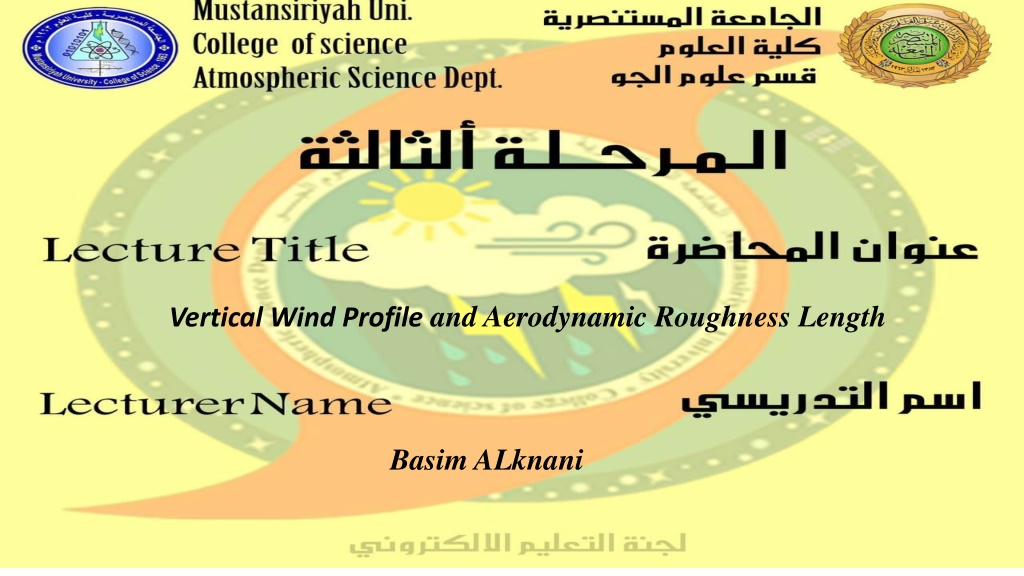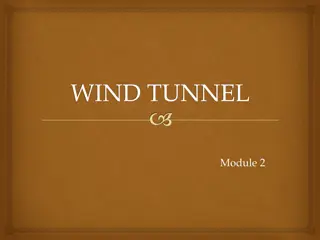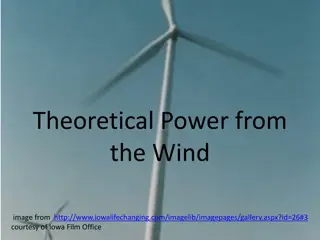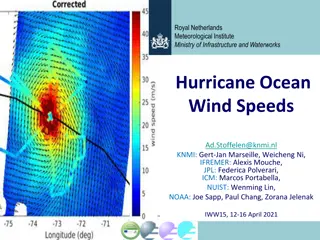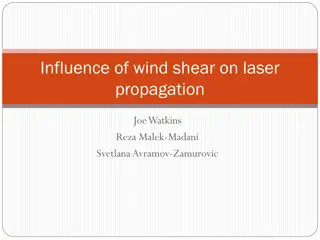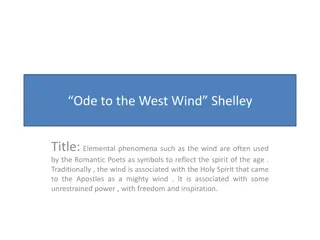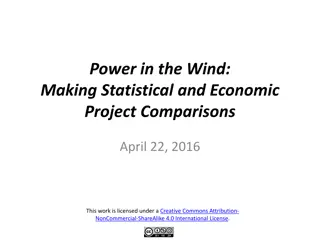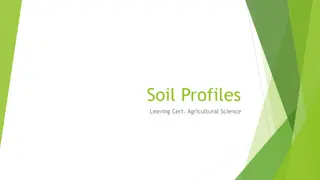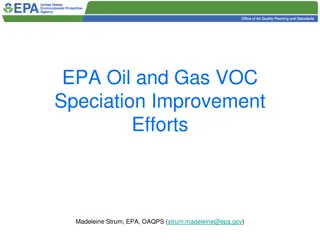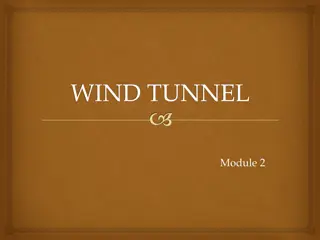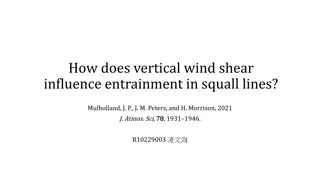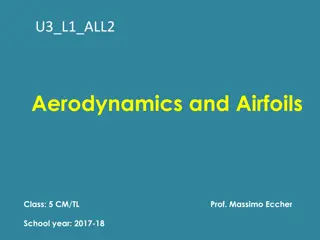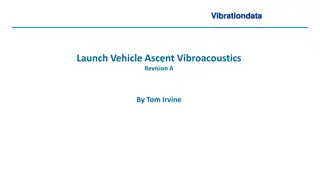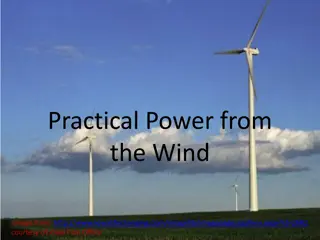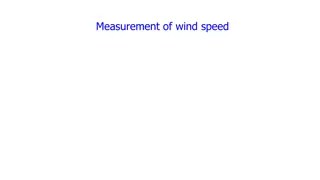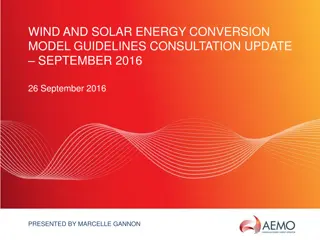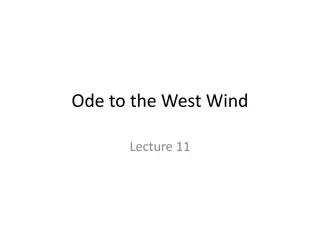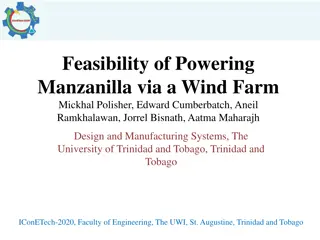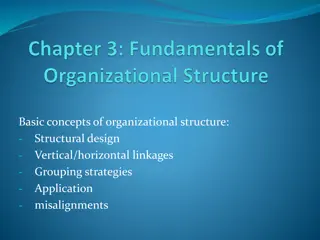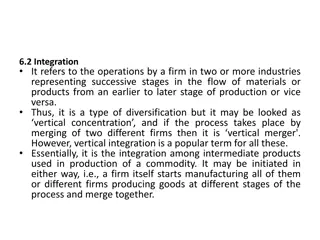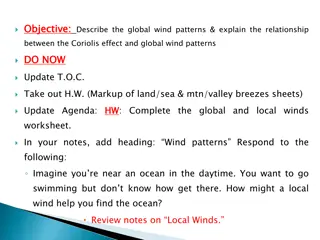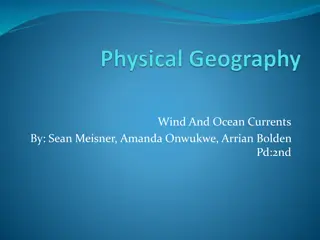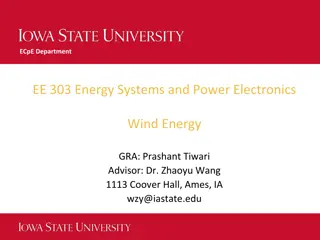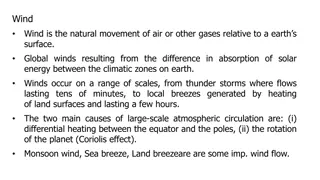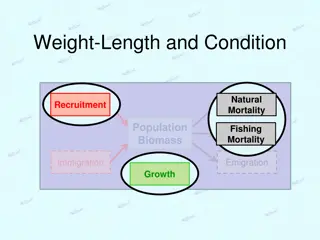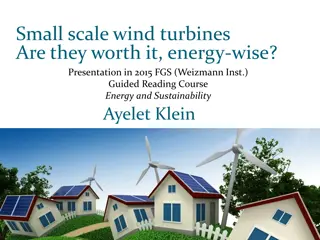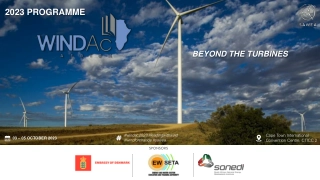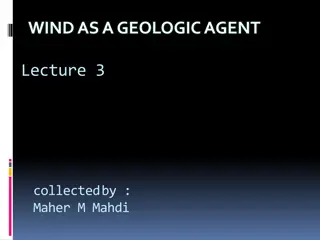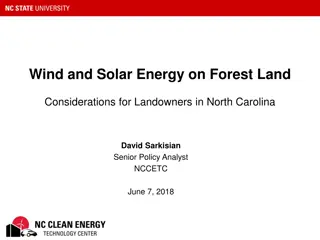Understanding Vertical Wind Profiles and Aerodynamic Roughness Length
The interaction between wind and the Earth's surface affects wind profiles and aerodynamic roughness length. The nature of airflow over surfaces, changes in wind speed with height, and the concept of aerodynamic roughness length are explained. Techniques for estimating aerodynamic roughness length based on surface characteristics and wind speed measurements are also discussed.
- Vertical wind profile
- Aerodynamic roughness length
- Airflow dynamics
- Wind speed measurement
- Surface characteristics
Download Presentation

Please find below an Image/Link to download the presentation.
The content on the website is provided AS IS for your information and personal use only. It may not be sold, licensed, or shared on other websites without obtaining consent from the author. Download presentation by click this link. If you encounter any issues during the download, it is possible that the publisher has removed the file from their server.
E N D
Presentation Transcript
Vertical Wind Profile and Aerodynamic Roughness Length Basim ALknani
The Nature of Airflow over the surface: The fluid moving over a level surface exerts a horizontal force on the surface in the direction of motion of the fluid. conversely, the surface exerts an equal and opposite retarding force on the fluid this force does not act on the bulk of the fluid but only on its lower boundary, known as the fluid boundary layer . At heights in excess of 500m above the earth surface, horizontal air motions proceed in a largely geostrophic manner (friction force decay in this height). between a level of 50m or so and the earth surface , the speed of the wind reduces more and more rapidly towards zero . the region between 500m and 50m is in effect a zone of transition between the smooth geostrophic flow in the free atmosphere and flow of an essentially turbulent nature near the ground .
Vertical Wind Profile in boundary layer Wind speed is zero at the surface and increases sharply in the near surface layer such that the wind speed increases exponentially with height . The shape of the profile is influenced by the nature of the underlying surface, the surrounding topography and nearby obstacles. ?? ?? 1 2 Wind speed shows an increase with respect to height and as such it is generally beneficial to discharge pollutants at a greater height as dispersion is greater. The rate of change with height (known as wind shear) is greatest near the surface.
Aerodynamic Roughness Length: the aerodynamic roughness length, z0, is defined as the height where the wind speed becomes zero. the aerodynamic roughness length is determined for a particular surface, it does not change with wind speed, stability, or stress. it can change if the roughness elements on the surface change such as caused by changes in the height and coverage of vegetation, manufacture of fences, construction of houses, deforestation or lumbering, etc. Letta (1969) suggested a method for estimating the aerodynamic roughness length based on the average vertical extent of the roughness elements (? ), the average vertical cross section area obtainable to the wind by one element (S?), and [ SL = (total ground surface area / number of elements)]. ? ?0 = 0.5 (S? ?/ /? ?? ?) (1.1) This relationship is acceptable when the roughness elements are evenly spaced, not too close together, and have similar height and shape. Kondo and Yamazawa (1986) proposed a similar relationship, where variations in individual roughness elements were accounted for. (Si) represent the actual horizontal surface area occupied by element (i), and (hi) be the height of that element. if (n) elements occupy a total area of (St), then the roughness length can be approximated by: ? ?? = ?.?? ???? (?.?) ?? ?=? these expressions have been applied successfully to buildings in cities.
Also, can estimate the aerodynamic roughness length based on the measurement of the wind speed at various heights.
Displacement Distance: Overland, if the individual roughness elements are packed very closely together, then the top of those elements begins to act like a displaced surface. for example, in some forest canopies, the trees are close enough together to make a solid- looking mass of leaves, when viewed from the air. in some cities the houses are packed close enough together to give a similar effect, namely, the average rooftop level begins to act on the flow like an above the canopy top, the wind profile increases logarithmically with height, as shown in the figure. thus, we can define both a displacement distance, (d), and a roughness length, (??), such equation: ? ? =? ?ln(? ? ??) (1.3)
Friction Velocity: The momentum flux (i.e. momentum transfer per unit area) is also known as the shear stress or the drag force. The dimensions of drag are in [N m-2]. In the atmospheric surface layer, wind always increases with height and the momentum transfer is always downwards. the drag is a force on the surface along the direction of the wind. The friction velocity, (? ), is defined as ? . (1.4) ? ? = shear stress, (?). (? ) is not the speed of the flow but simply another expression for the momentum flux at the surface. (? ) air density . The shearing stress exerted on a surface by fluid flow is generated within the boundary layer and transmitted downwards to the surface in the form of a momentum flux. ( shearing stress can be expressed , force per unit area , or momentum per unit area per unit time ) . ? 2 ?(?)2 C? = (C?) ???? ???????????
